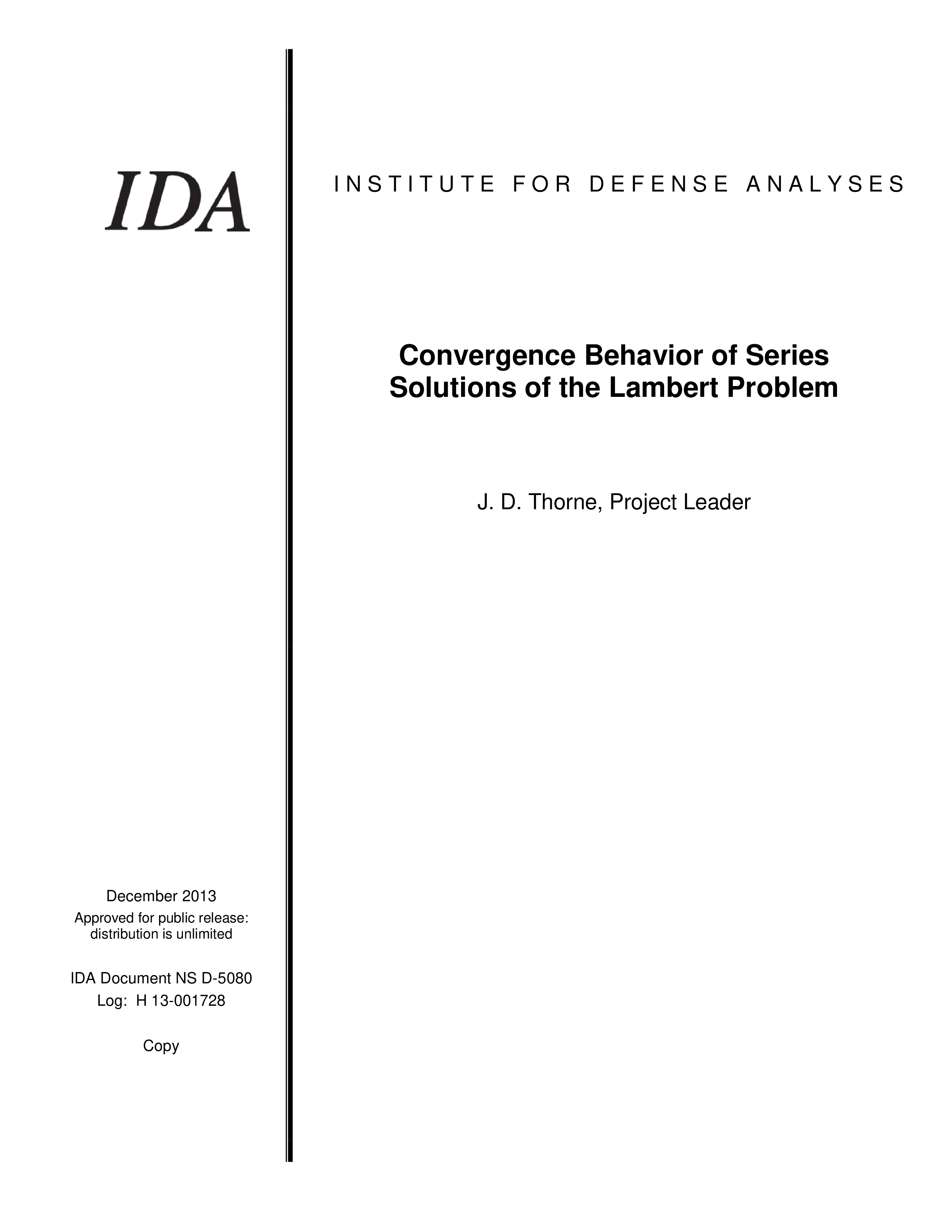Convergence Behavior of Series Solutions of the Lambert Problem
December, 2013
IDA document: D-5080
FFRDC: Systems and Analyses Center
Type: Documents
Division: System Evaluation Division,
Science, Systems and Sustainment Division
Authors:
IDA document: D-5080
FFRDC: Systems and Analyses Center
Type: Documents
Division: System Evaluation Division
Authors:
Authors
J. D. Thorne
See more authors

